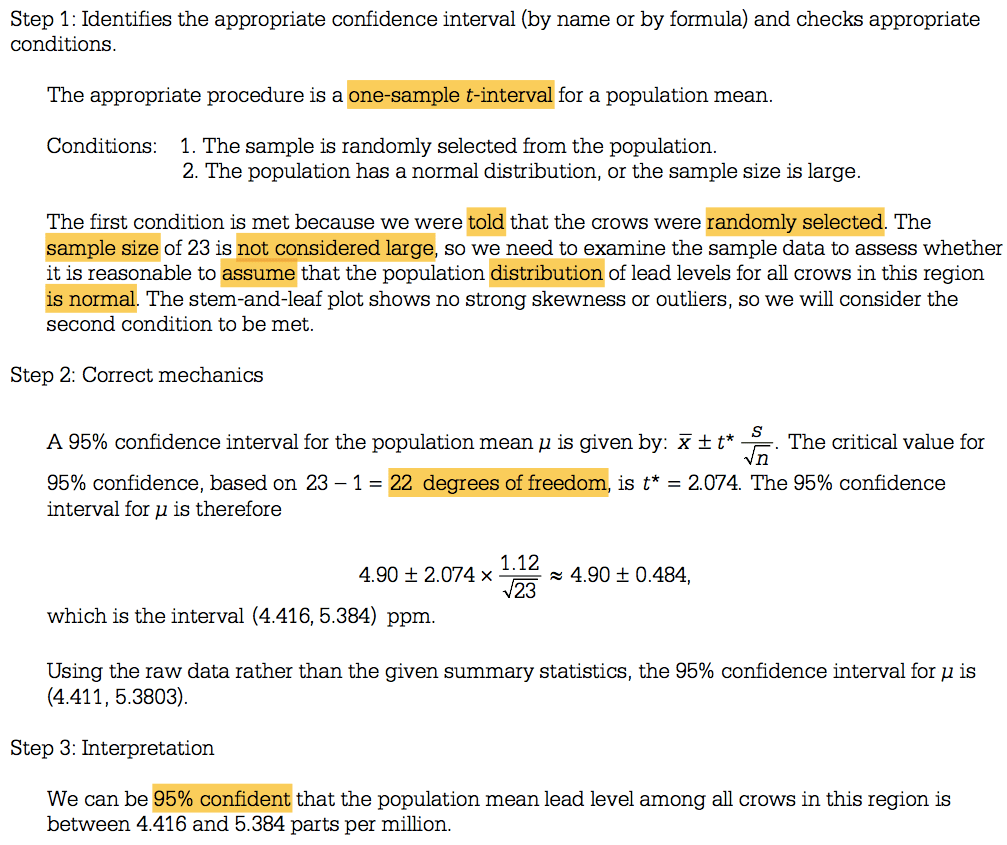Question 1 (b)

Question 2 (c)

Question 4

| Statistic/Parameter | Condition/Assumption | How do we check? |
|---|---|---|
More two Sample Proportions (Test for Homogeneity) |
1. Count Condition: The data are counts. 2. Independent Condition: Data in groups are independent. 3. Large sample |
1. Verify this. 2. SRS and 10n < N 3. Count > 5 |

Question 5 (a)

Question 5 (b)

| Statistic/Parameter | Condition/Assumption | How do we check? |
|---|---|---|
Two Sample Proportions (Independent) |
1. Randomization Condition: Samples in each group are random samples (SRS) or representatives of their populations or in experiments the treatments are randomly assigned. 2. Normality Condition: n1p1 and n2p2 ≥ 10 and n1q1 and n2q2 ≥ 10. 3. Independent Condition: The selection of each subject is independent of each other (10n < N) for each sample. In some experiments this is not necessary. 4. Independence of Groups Condition: The groups are independent of each other. |
1. Based on the information provided. 2. Show that the inequalities are true. 3. Show that the inequality is true. 4. Based on the information provided. |
Question 5 (c)

Question 6 (a)
